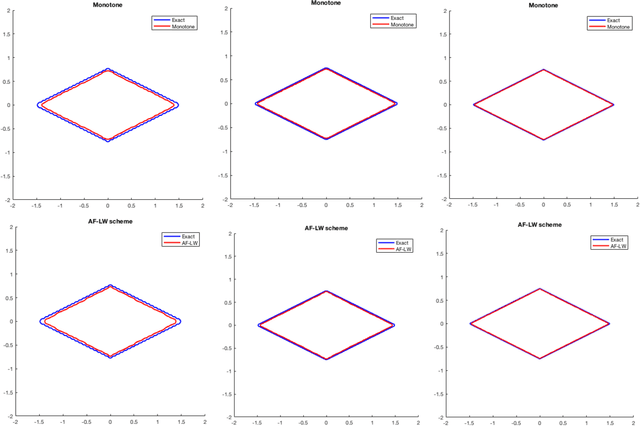Giulio Paolucci
Three-dimensional numerical schemes for the segmentation of the psoas muscle in X-ray computed tomography images
Dec 10, 2023Abstract:The analysis of the psoas muscle in morphological and functional imaging has proved to be an accurate approach to assess sarcopenia, i.e. a systemic loss of skeletal muscle mass and function that may be correlated to multifactorial etiological aspects. The inclusion of sarcopenia assessment into a radiological workflow would need the implementation of computational pipelines for image processing that guarantee segmentation reliability and a significant degree of automation. The present study utilizes three-dimensional numerical schemes for psoas segmentation in low-dose X-ray computed tomography images. Specifically, here we focused on the level set methodology and compared the performances of two standard approaches, a classical evolution model and a three-dimension geodesic model, with the performances of an original first-order modification of this latter one. The results of this analysis show that these gradient-based schemes guarantee reliability with respect to manual segmentation and that the first-order scheme requires a computational burden that is significantly smaller than the one needed by the second-order approach.
A High-Order Scheme for Image Segmentation via a modified Level-Set method
Dec 07, 2018



Abstract:The method is based on an adaptive "filtered" scheme recently introduced by the authors. The main feature of the scheme is the possibility to stabilize an a priori unstable high-order scheme via a filter function which allows to combine a high-order scheme in the regularity regions and a monotone scheme elsewhere, in presence of singularities. The filtered scheme considered in this paper uses the local Lax-Friedrichs scheme as monotone scheme and the Lax-Wendroff scheme as high-order scheme but other couplings are possible. Moreover, we introduce also a modified velocity function for the level-set model used in segmentation, this velocity allows to obtain more accurate results with respect to other velocities proposed in the literature. Some numerical tests on synthetic and real images confirm the accuracy of the proposed method and the advantages given by the new velocity.
 Add to Chrome
Add to Chrome Add to Firefox
Add to Firefox Add to Edge
Add to Edge